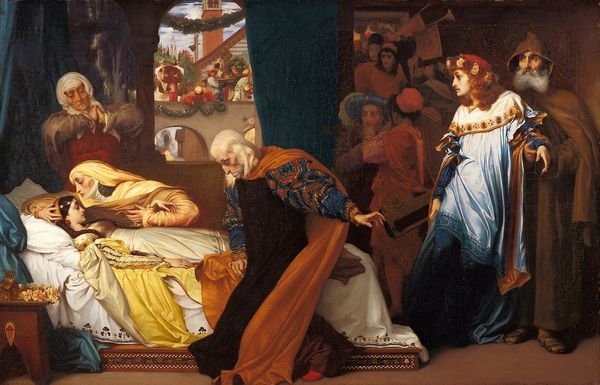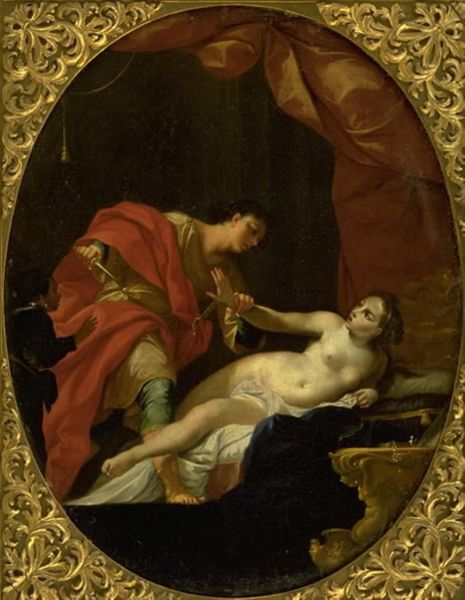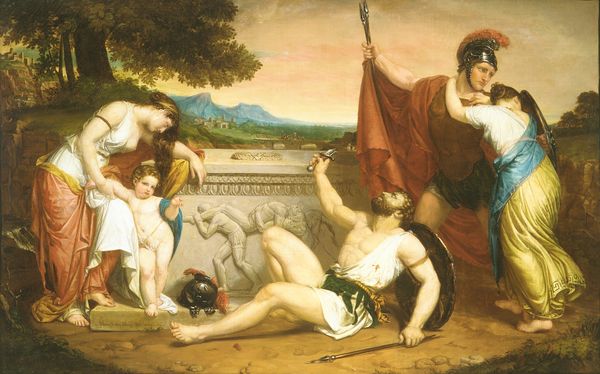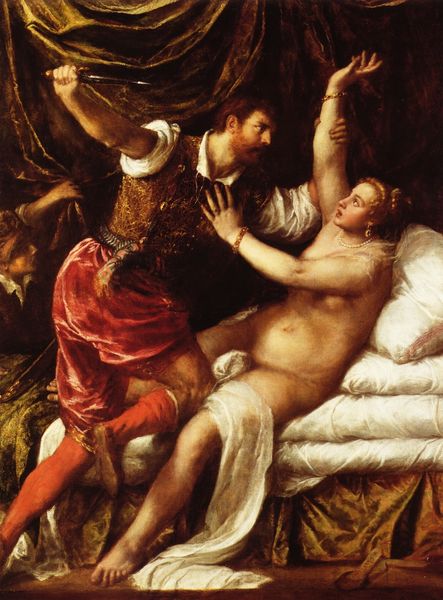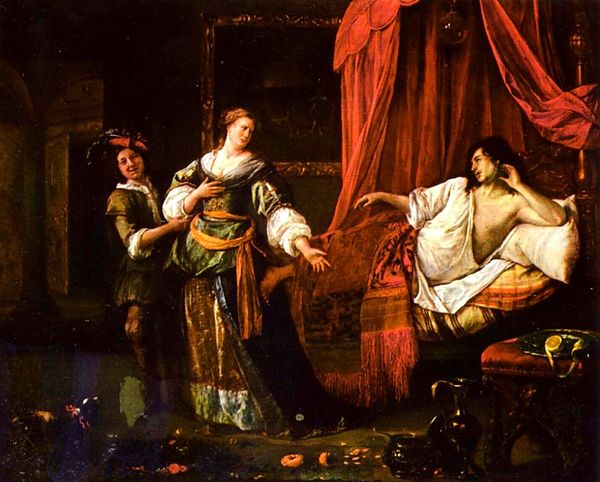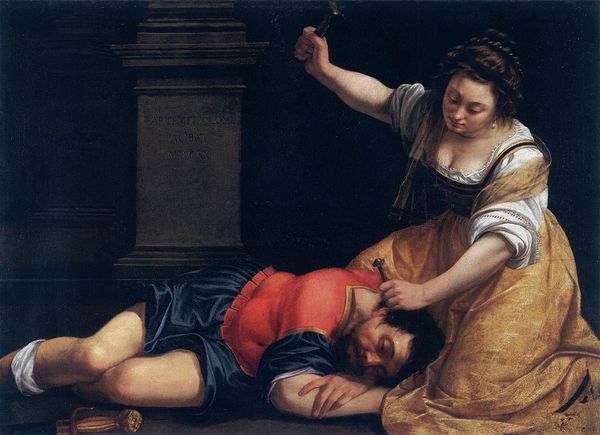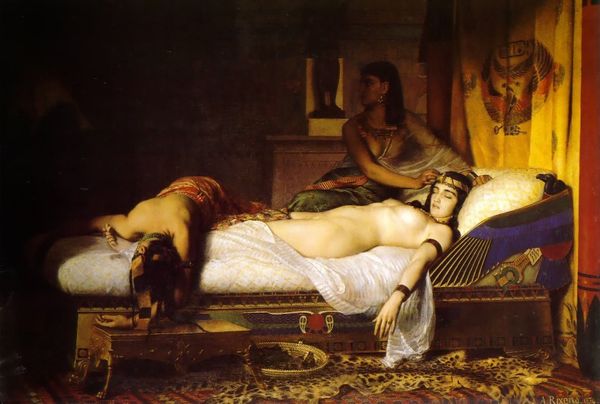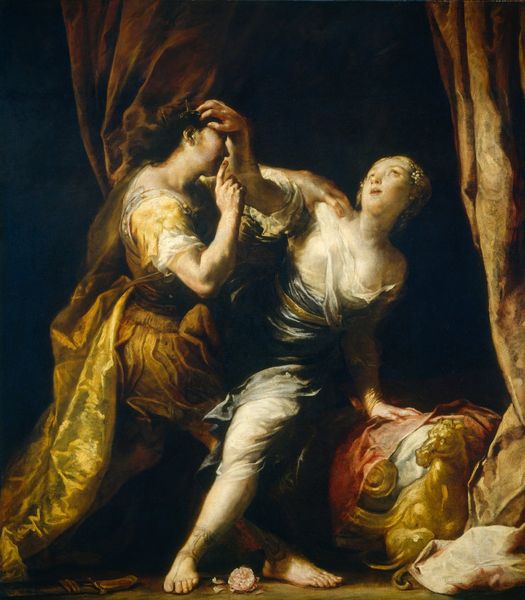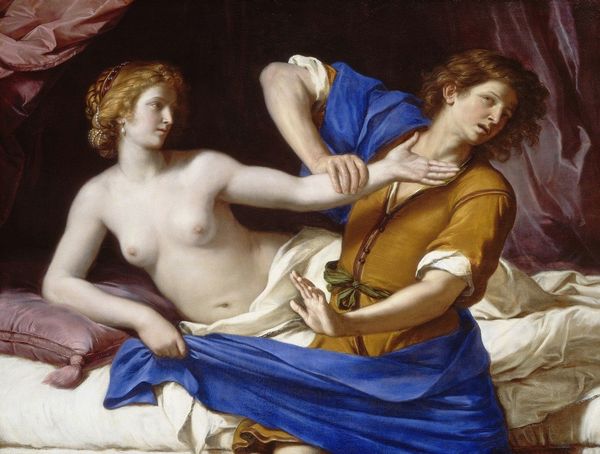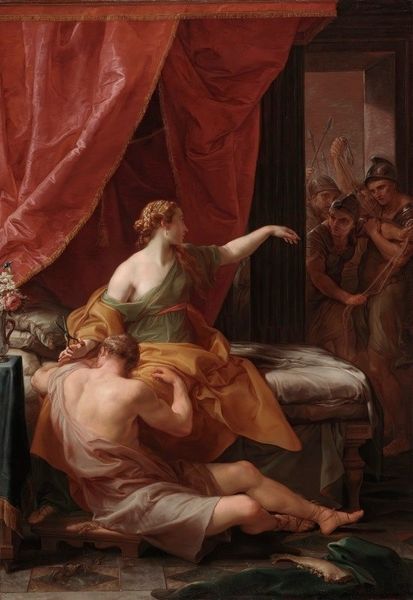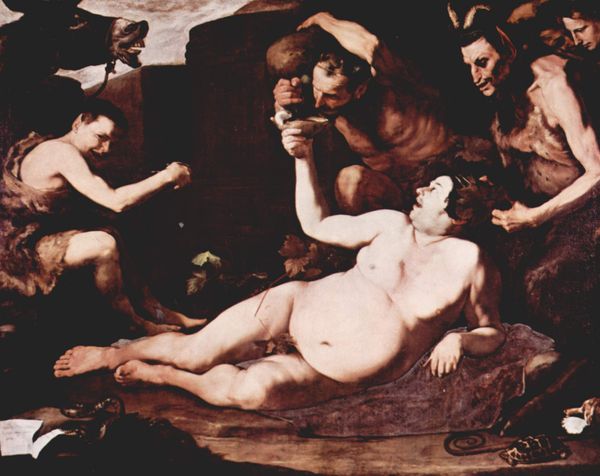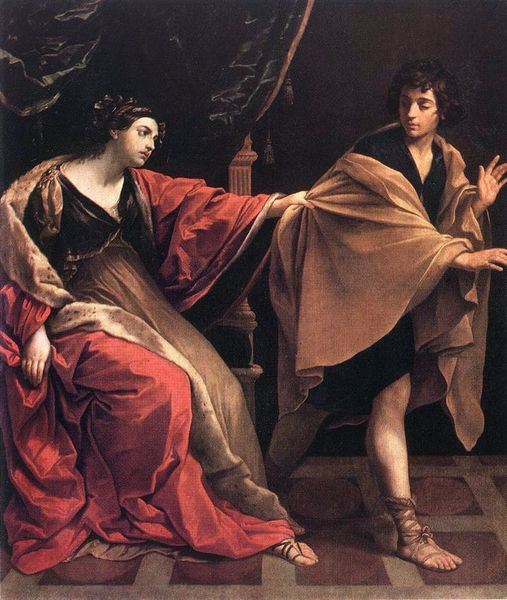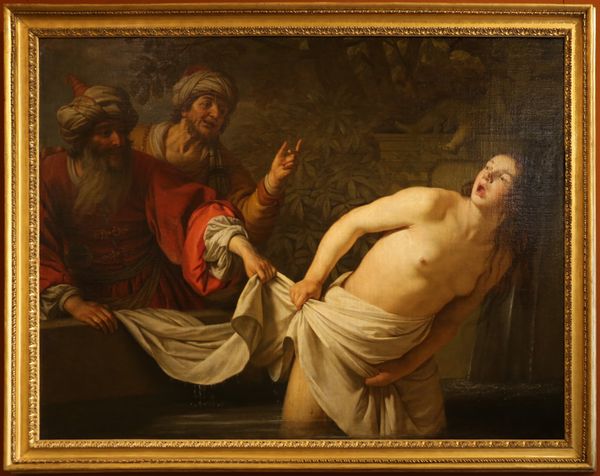
painting, oil-paint
#
narrative-art
#
baroque
#
painting
#
oil-paint
#
figuration
#
history-painting
#
italian-renaissance
#
nude
#
realism
Copyright: Public domain
Orazio Gentileschi painted "Joseph and Potiphar's Wife" in Italy, sometime in the early 17th century, depicting a scene from the Book of Genesis. The tale of Joseph is a powerful narrative about sexual power, social hierarchy, and the place of justice in a corrupt world. Here, Gentileschi captures the moment Potiphar's wife attempts to seduce Joseph, a slave in her household, and the composition creates meaning through carefully constructed visual codes. The red curtain heightens the drama, while the contrast between the figures draws attention to the power dynamics at play. During the Counter-Reformation, artists often depicted biblical scenes to convey moral lessons. Gentileschi's work here comments on the social structures of his time. It’s a commentary on the abuse of power within the household but it also speaks to the broader societal issues of sexual temptation and social mobility. Historians consult period documents, religious texts, and artistic treatises to gain a deeper understanding of such works, to better understand the cultural and institutional contexts in which art is made and interpreted.
Comments
No comments
Be the first to comment and join the conversation on the ultimate creative platform.
